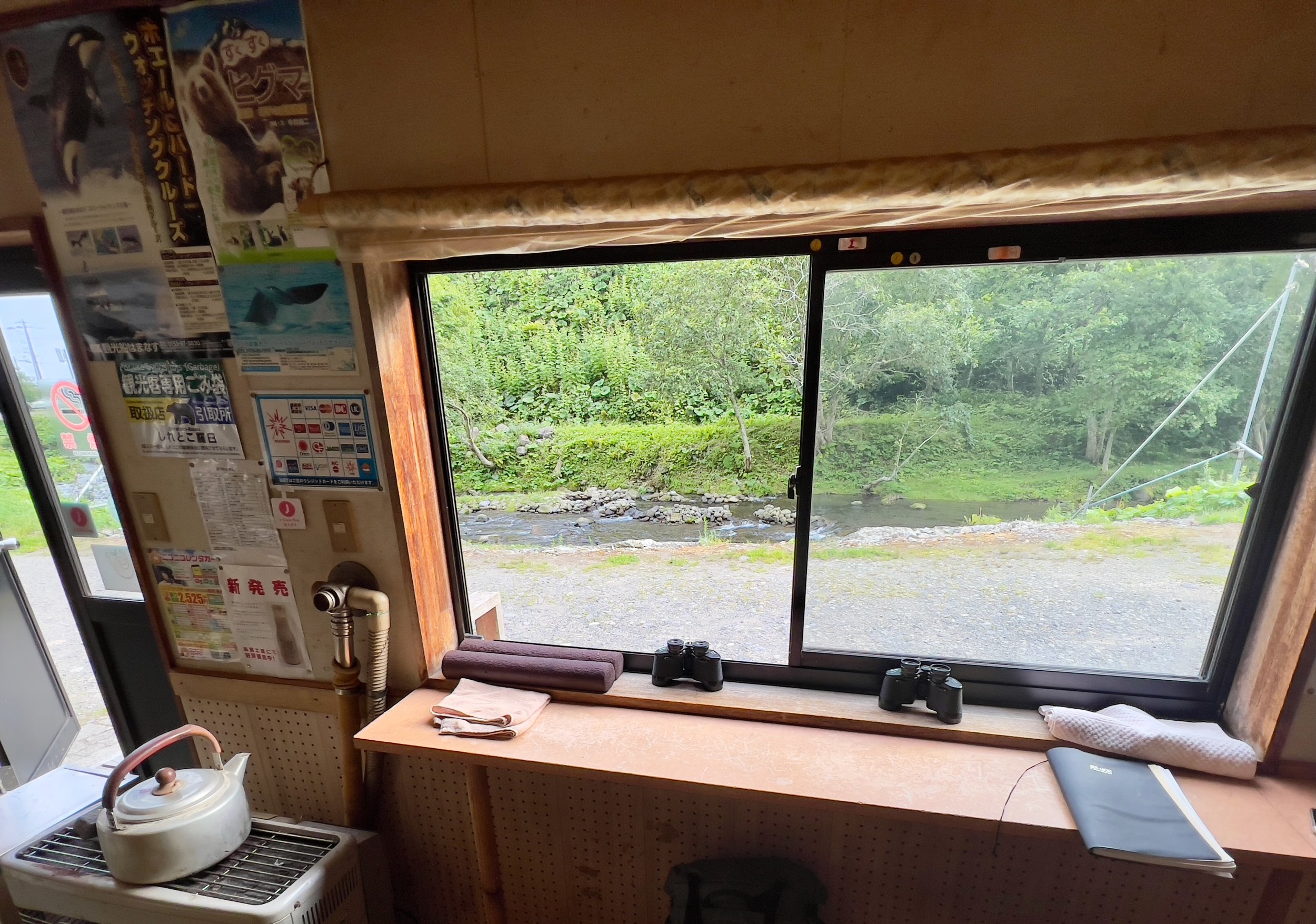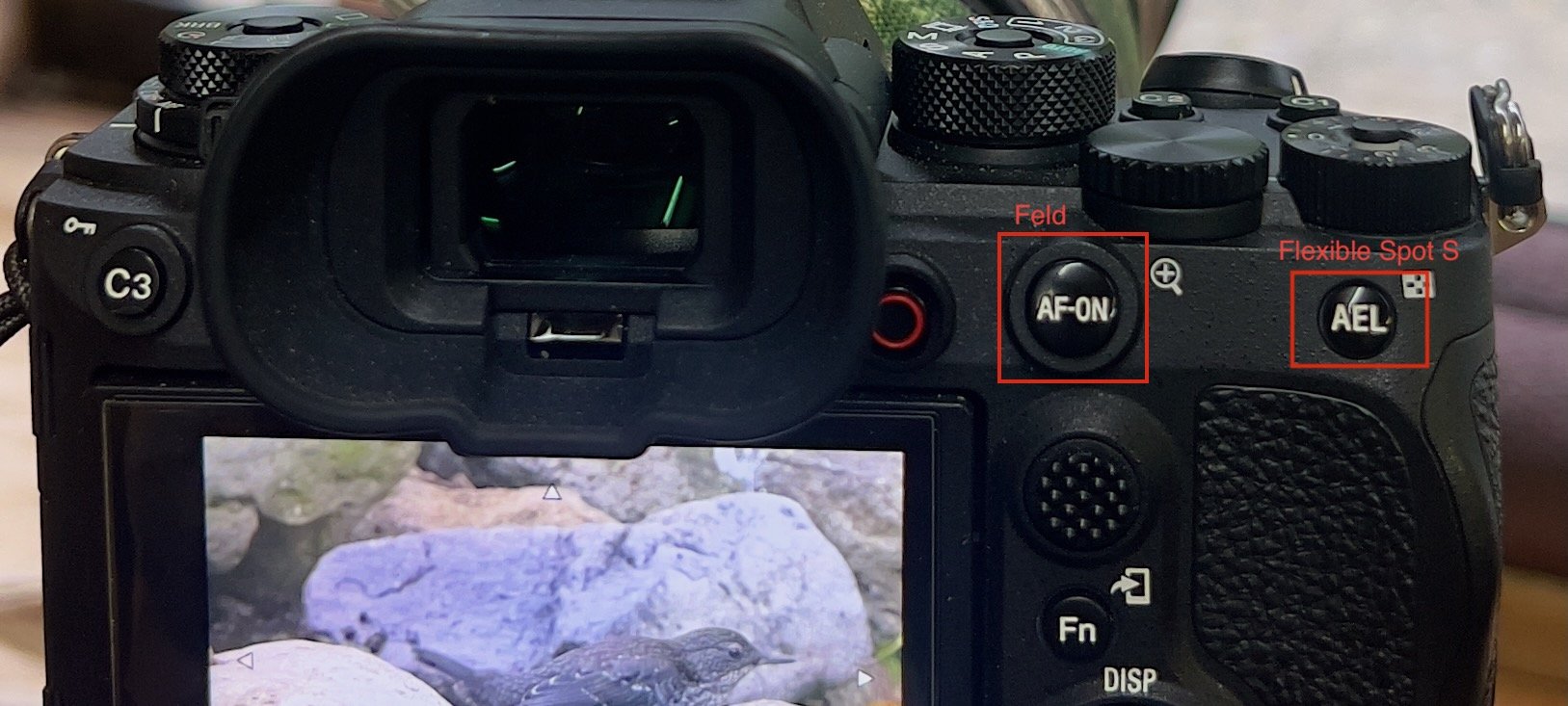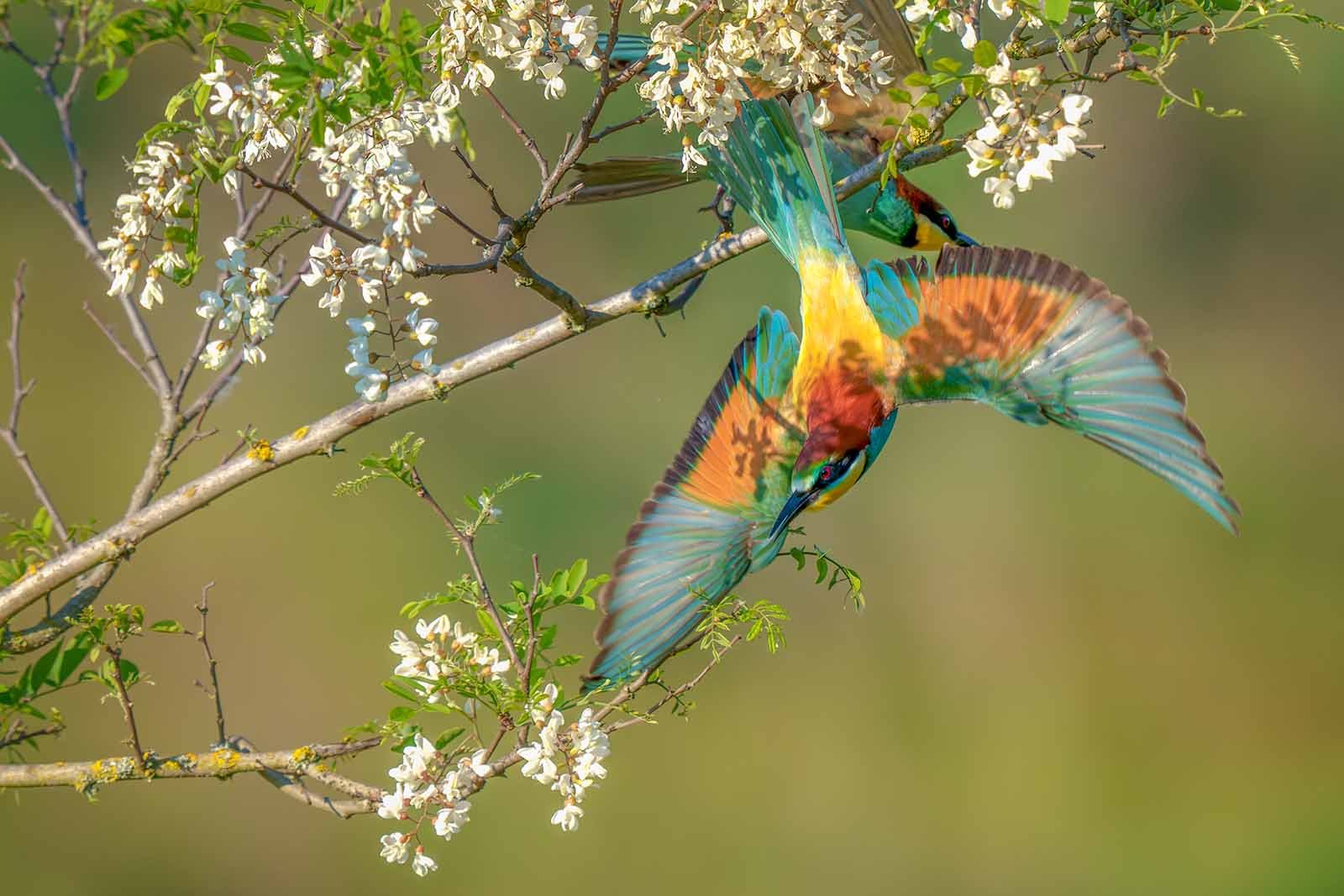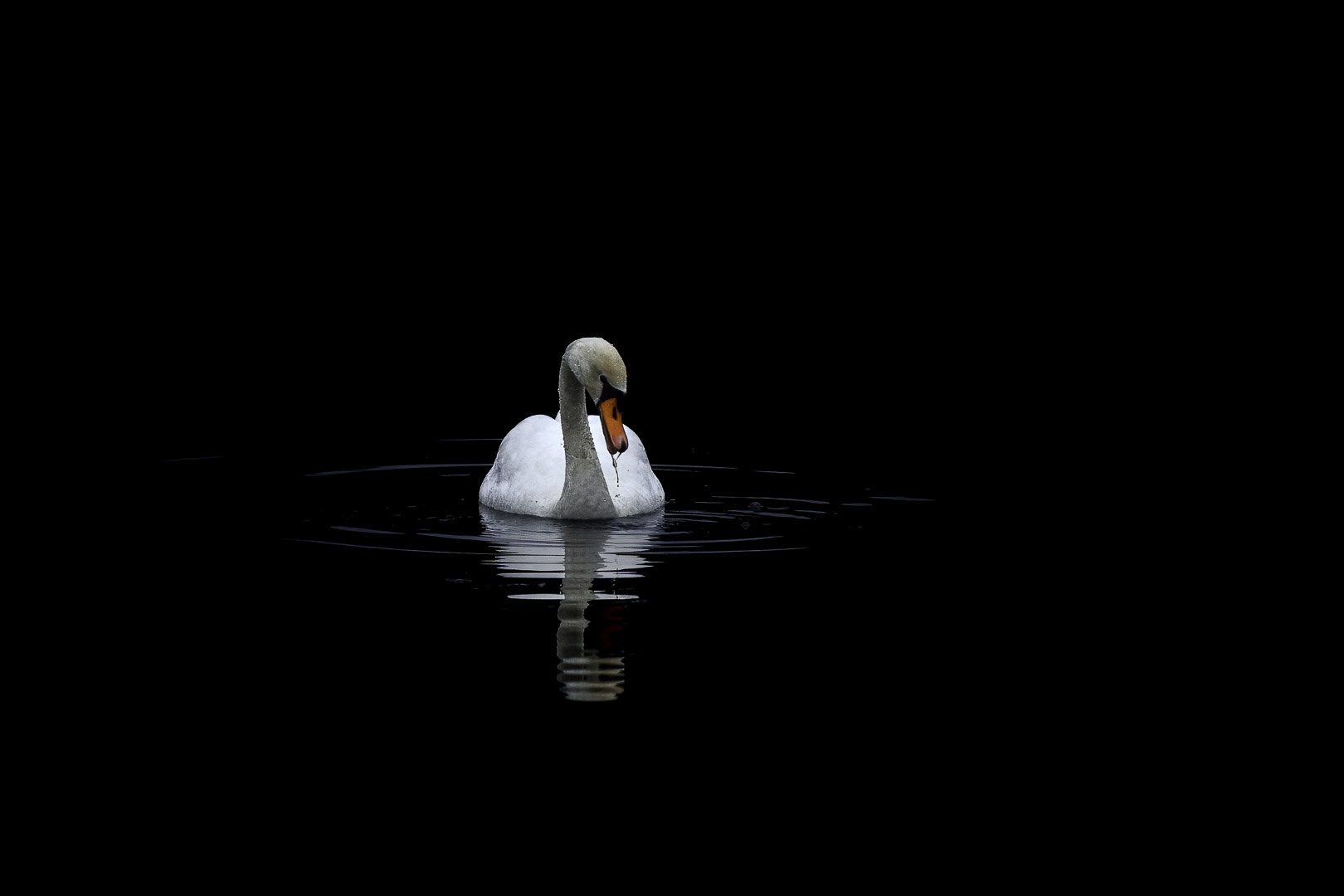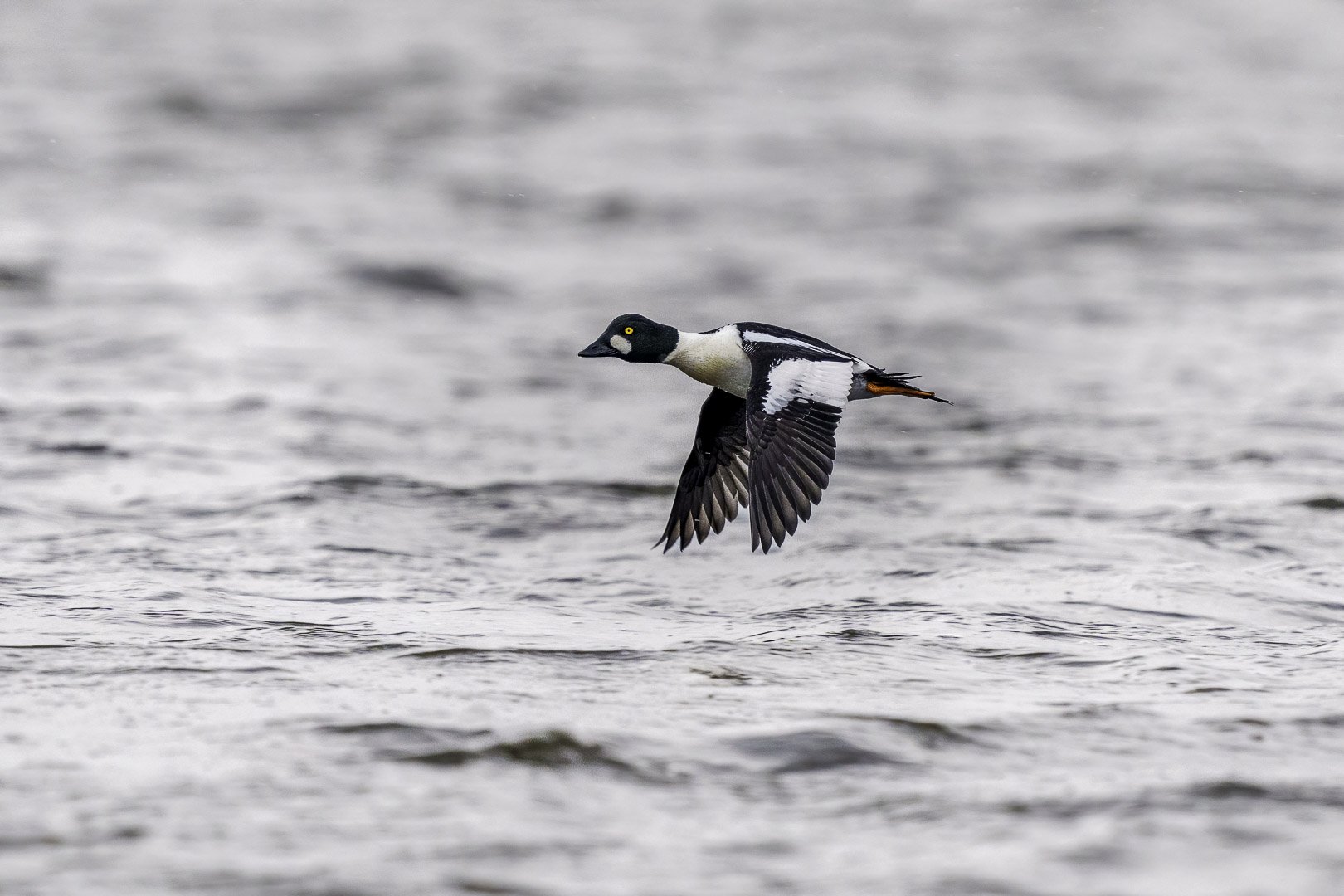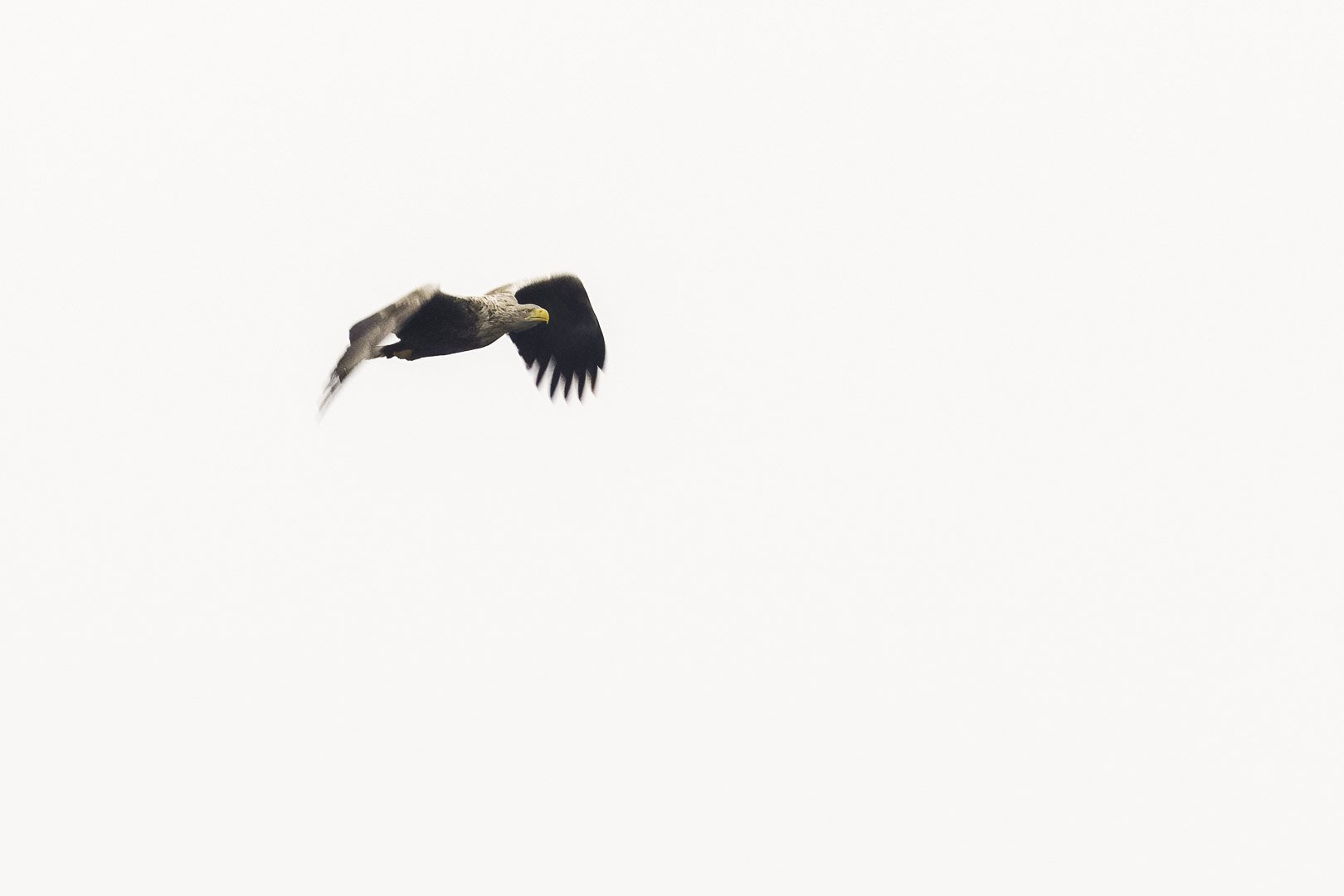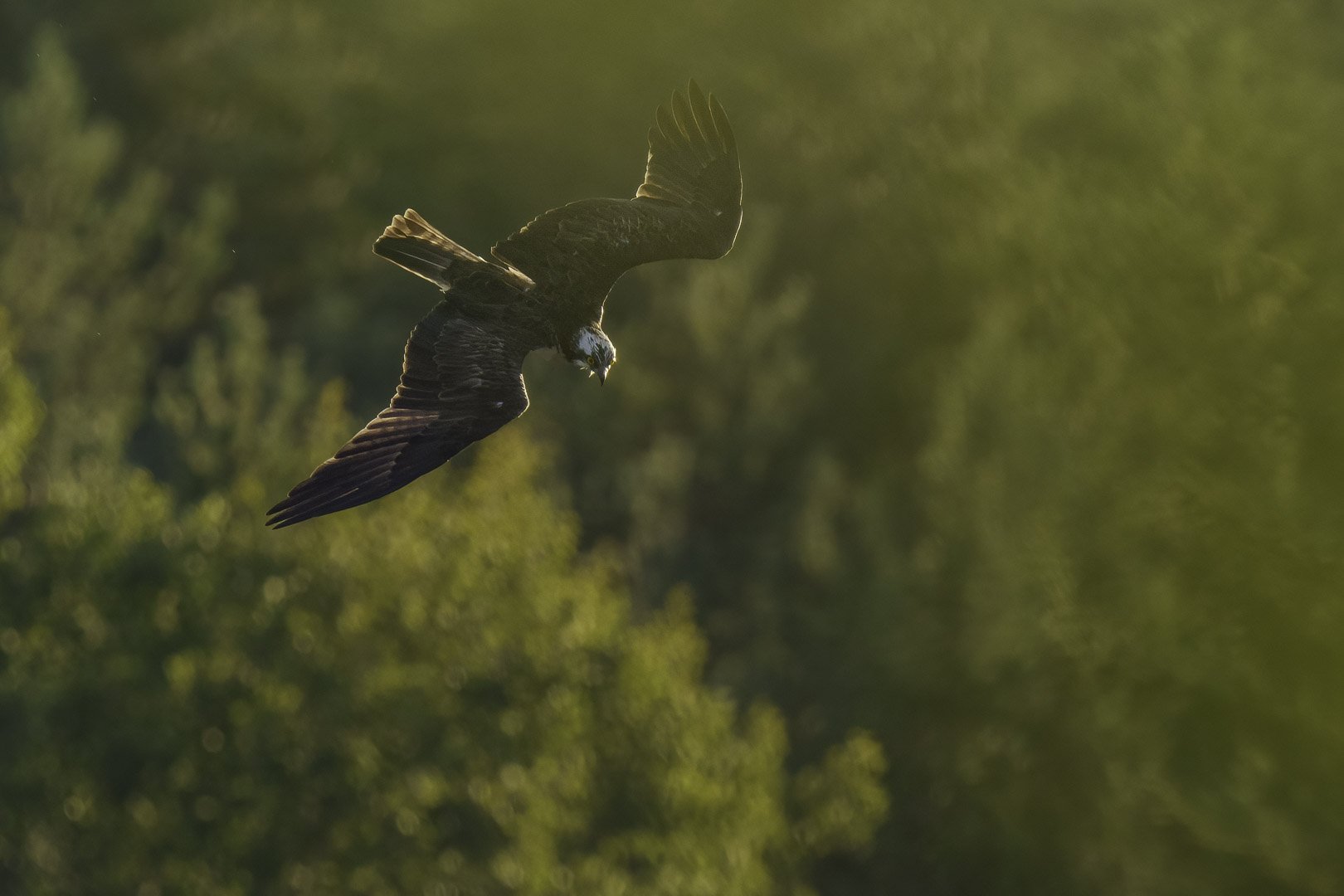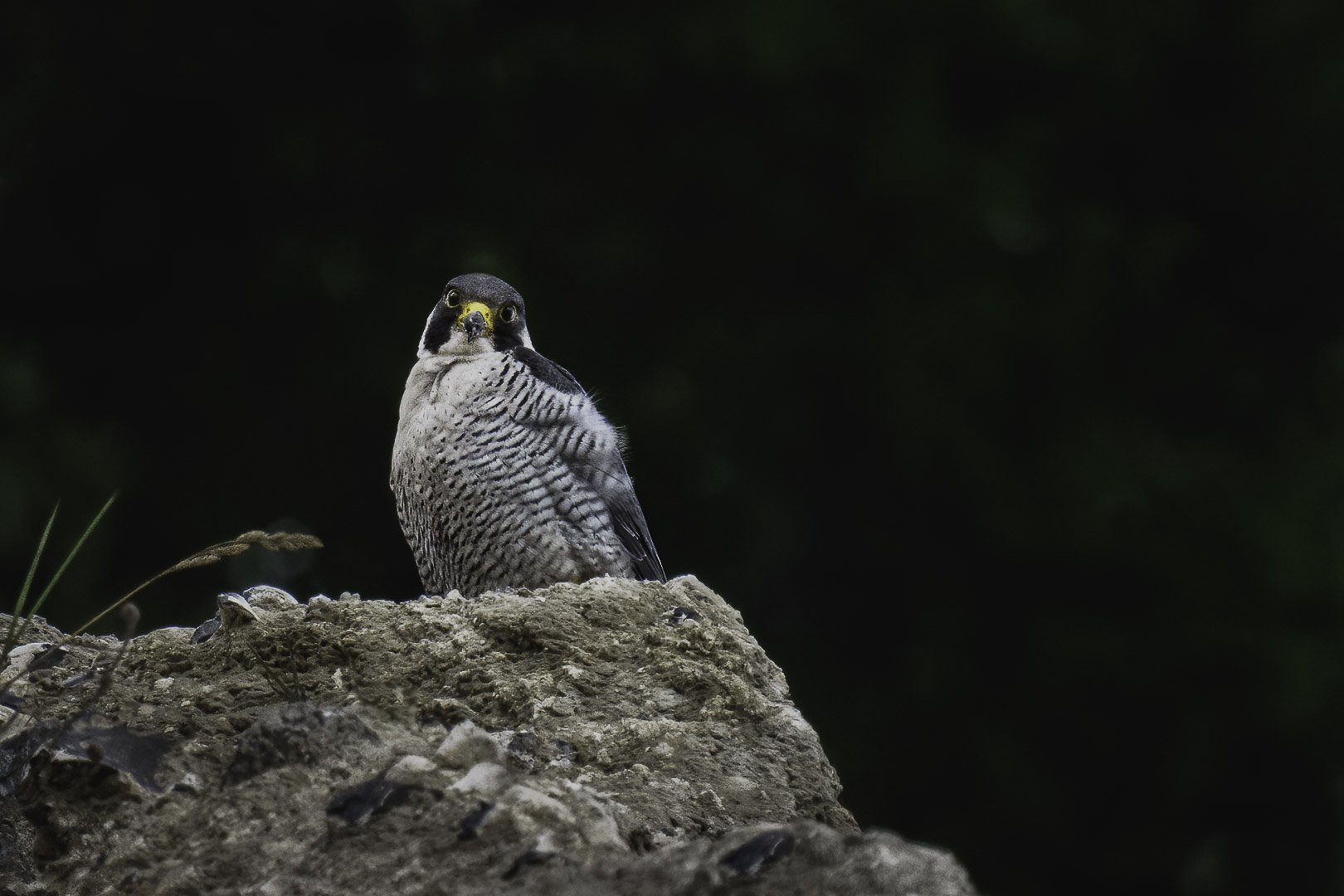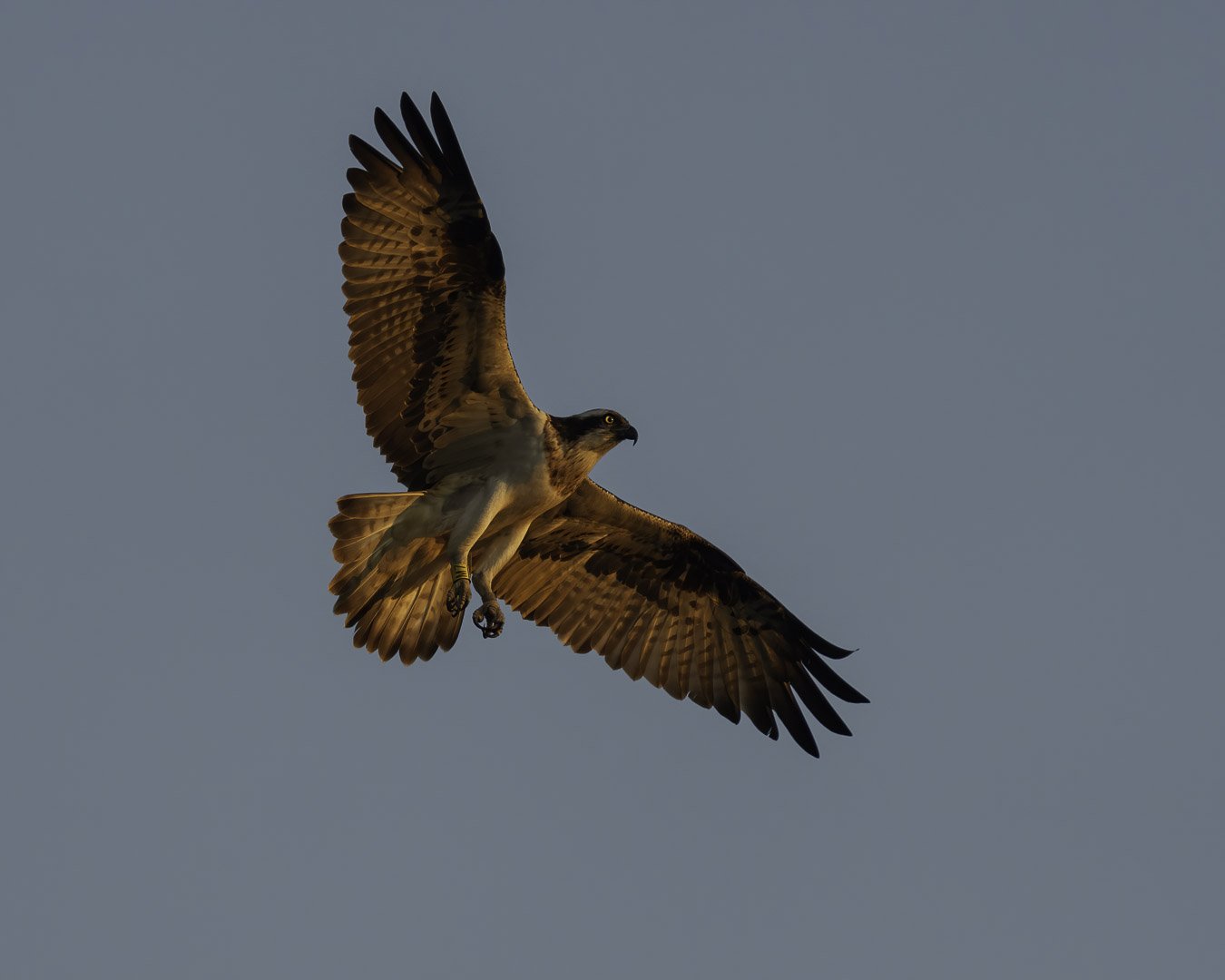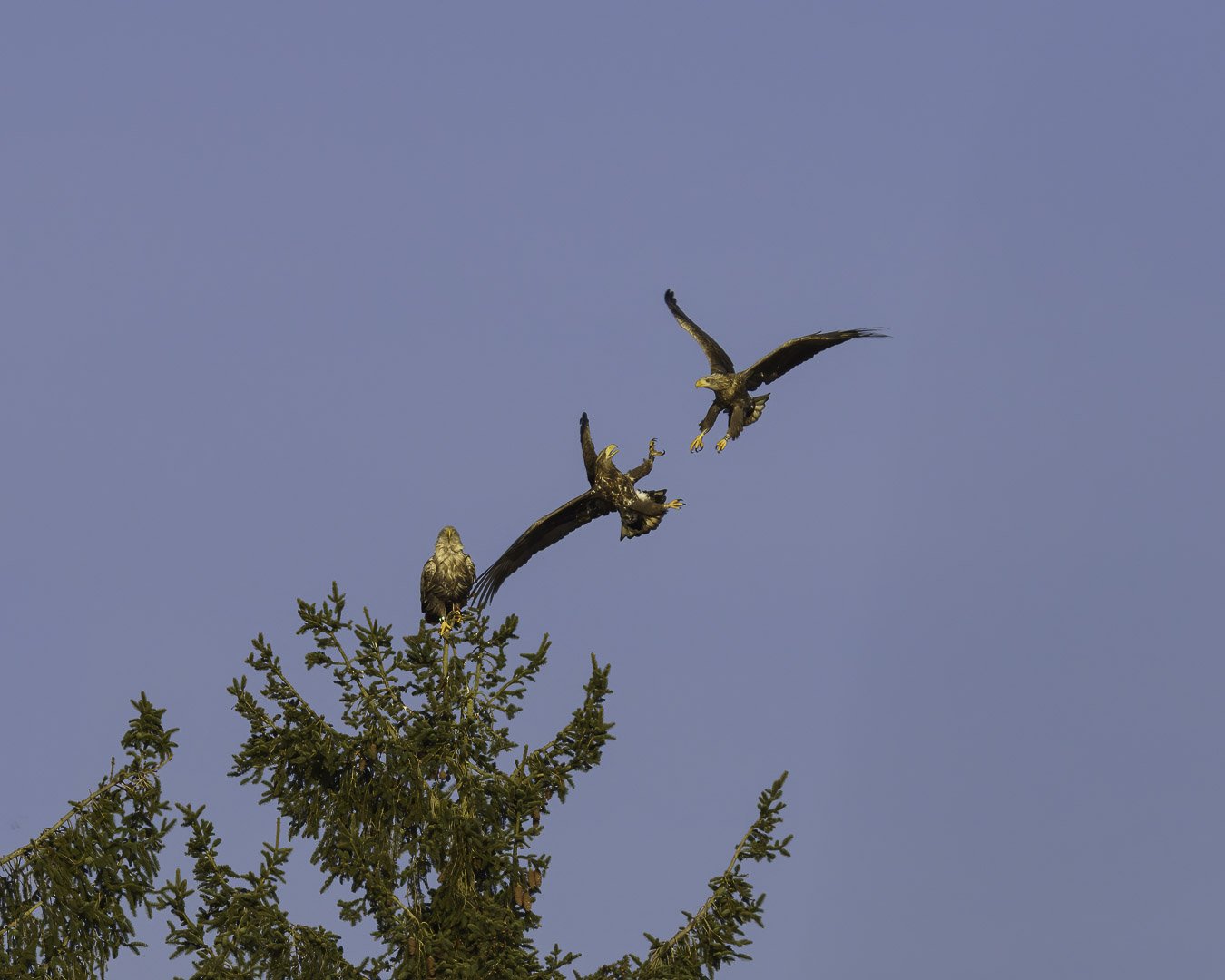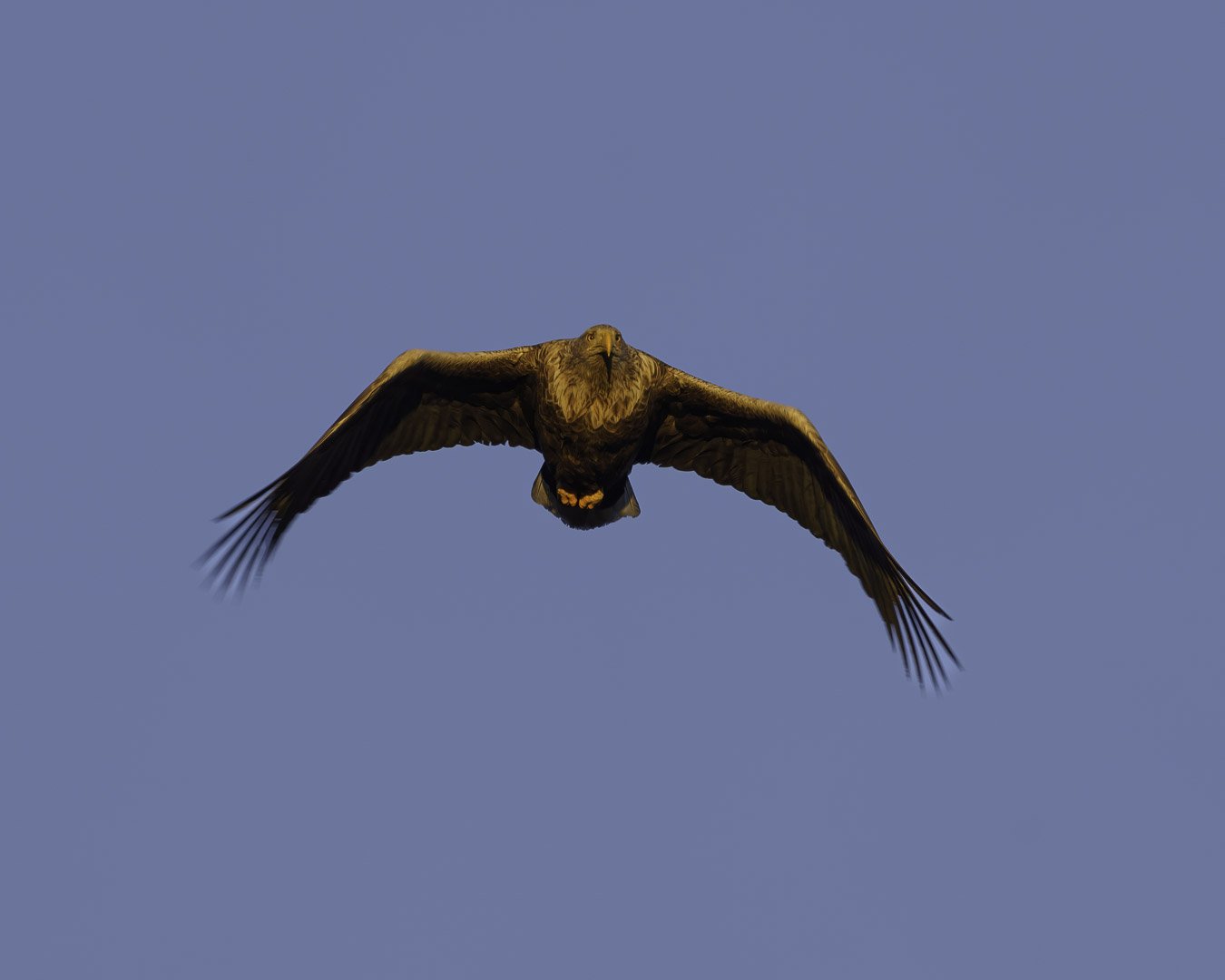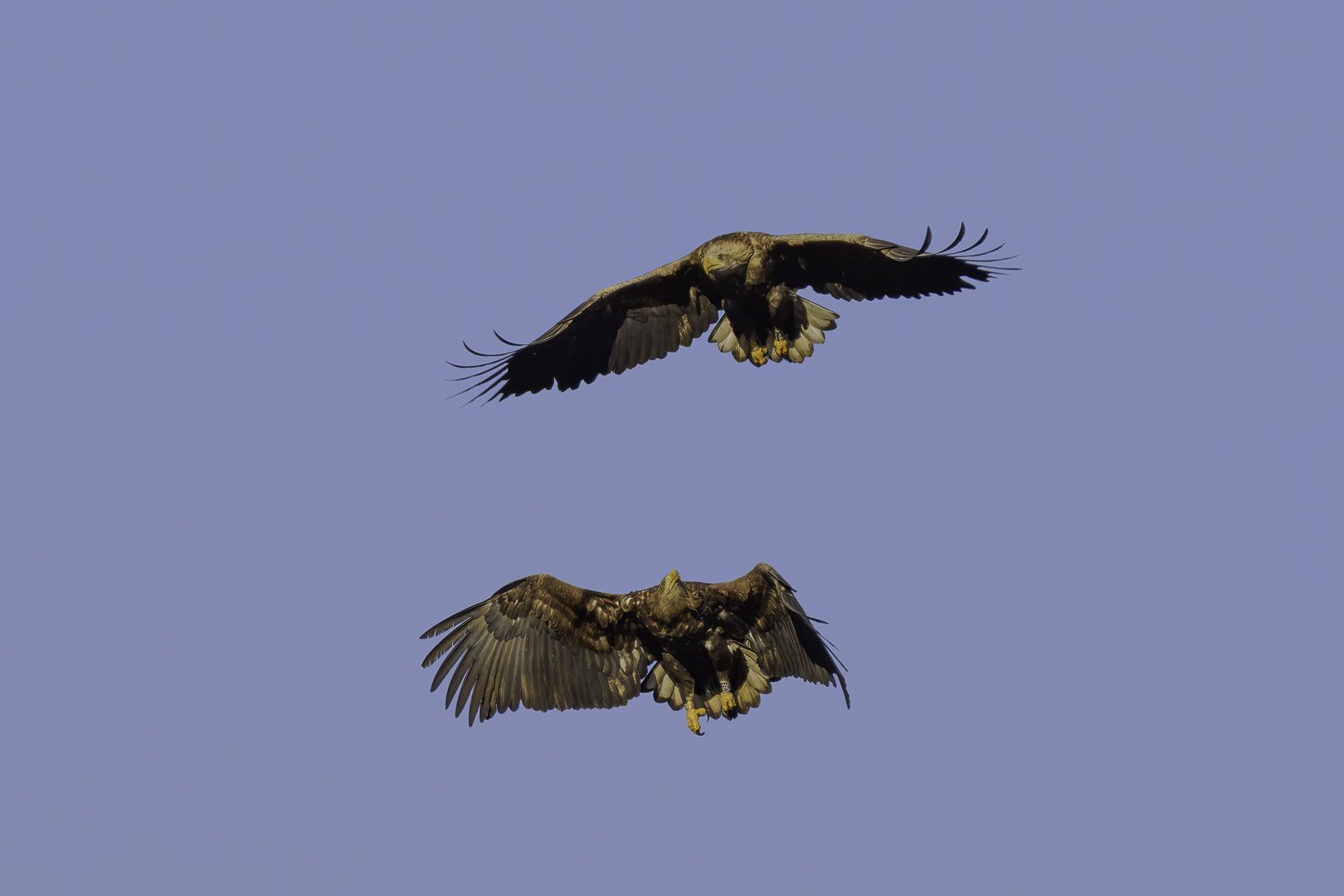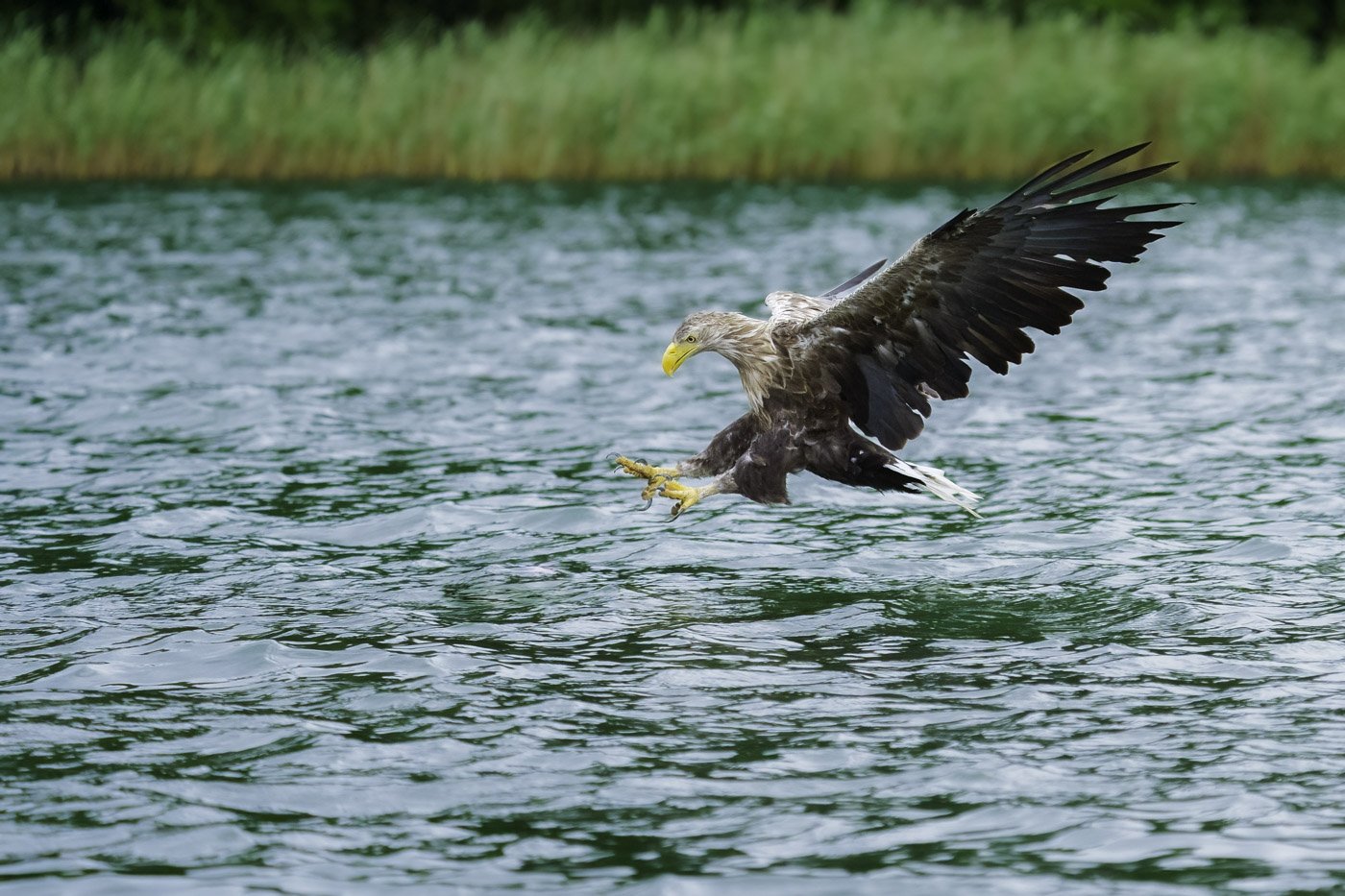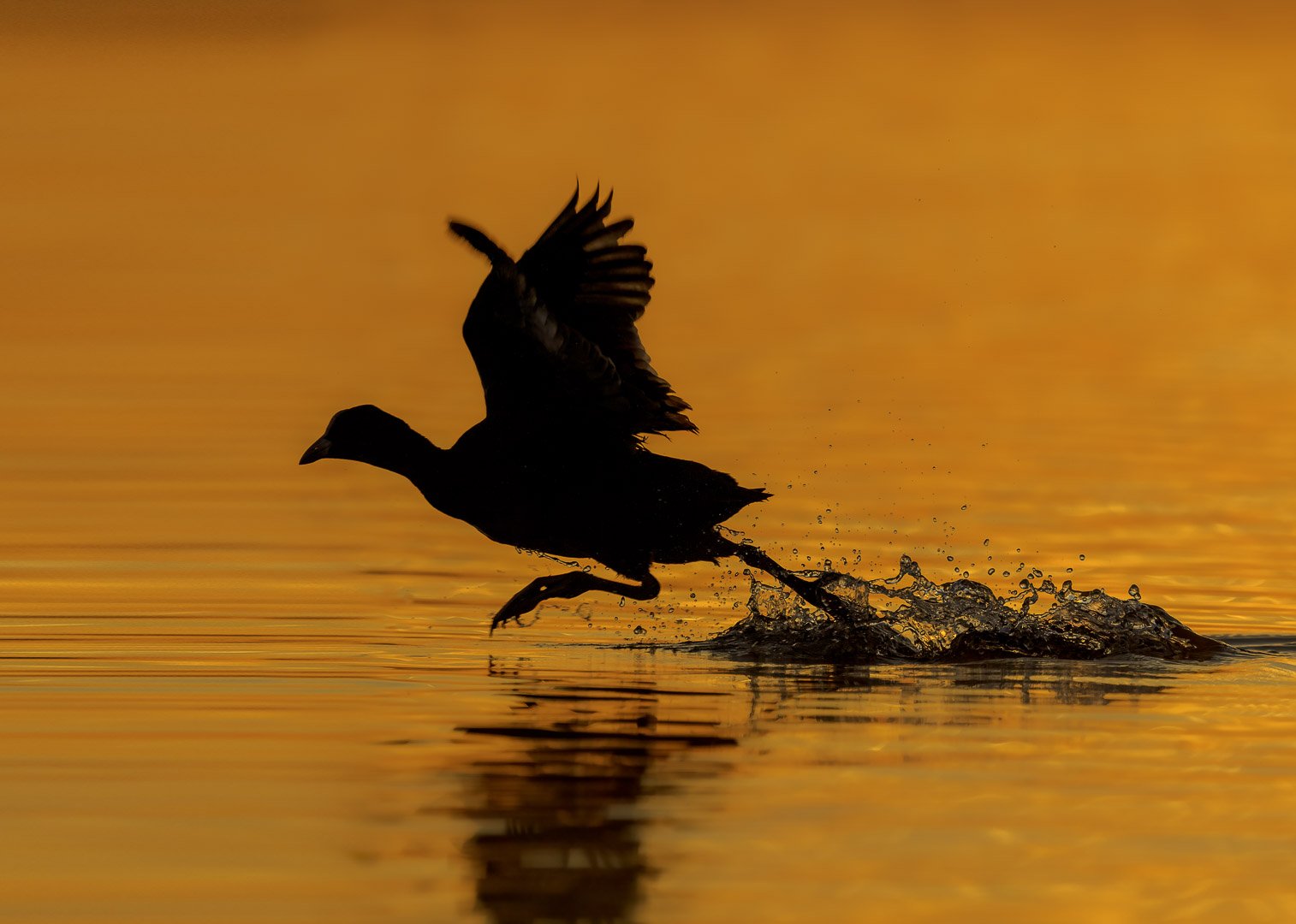Blakiston's Fish Owl Wild Japan #2
Blakiston's Fish Owl (Bubo blakistoni) in Rausu, Japan
3 PM, we have landed in Hokkaido (Japan) and are almost at our first destination. My journey to Hokkaido took about 24 hours with stopovers. I started in Nuremberg, then flew via Vienna and Tokyo. On such long flights, I can't get proper sleep and am accordingly tired upon arrival. Therefore, we planned an overnight stay near the airport to start our journey well-rested the next day.
Planned and done! The next day, we received our rental car and drove from Memanbetsu Airport to Rausu in a two-hour drive to photograph one of the world's largest owl species.
More information about Rausu and the planning can be read in the first part of my travel report. Wild Japan Travel Report - Part 1
Route from Memanbetsu Airport to Rausu
The map was graphically adjusted. Screenshot from www.openstreetmap.org - Copyright and License
Accommodation Washi no Yado in Rausu
Our first destination was the Washi no Yado guesthouse in Rausu, and for a good reason. Besides accommodation, you have the opportunity to photograph the Blakiston's Fish Owl (Bubo blakistoni) there. This is the only opportunity in Shiretoko and one of two in all of Japan to observe this rare animal.
The photo hide is freely accessible for guests of the guesthouse. Photographers not staying at the guesthouse can also use the hide for a fee of 3000 Yen per night, about 22 EUR at the exchange rate at that time.
The Blakiston's Fish Owl
First, I want to provide some information about the Blakiston's Fish Owl before I discuss the hide, equipment, and camera settings.
Blakiston's Fish Owl on the shore of Chitorai River
Blakiston's Fish Owl (Bubo blakistoni) Profile
Type: Owl species from the genus of eagle owls
Body Size: 60 - 72 cm
Wingspan: Up to 200 cm
Weight: Males up to 3.6 kg / Females up to 4.6 kg
Habitat: Forests with old trees
Occurrence: Russia, China, and Japan
Diet: Mainly fish
Endangerment: Red List - Endangered
Occurrence
The Blakiston's Fish Owl (Bubo blakistoni) is one of the largest of its kind. Unfortunately, it is on the Red List of endangered species. Only 140 breeding pairs remain in Japan, and the global population is estimated at a few thousand animals, with numbers declining.
The owls prefer a specific habitat: forested coasts, old-growth forests near streams or rivers. Since their primary food source is fish, it is also crucial that the water bodies in their habitat do not freeze over in winter. The owl is only found in remote areas of Russia, China, and Japan. The main reason for their endangerment is the lack of suitable habitats, primarily due to human activities destroying these areas.
Camera Sony A1 Lens: Sony 200 - 600 mm Setting: f8 - 1/80 - 293 mm - ISO 12800
Appearance
The ear tufts of the Blakiston's Fish Owl are pointed. It grows up to 72 cm tall with a wingspan of up to two meters. The feathers on its back are dark brown with heavy markings. The area around its throat is white, and its eyes glow orange-yellow.
Behavior
This owl species primarily feeds on fish and does not need to move silently, unlike its relatives. They sit on the shore searching for food in the water and appear somewhat clumsy in their movements. Their prey can weigh two to three times their body weight, which they can carry to the nest without much effort. The species is nocturnal but also hunts at dusk. The owl's nest is usually found in tree crowns or high tree cavities.
Due to the lack of habitats and the difficulty in finding food, owls do not breed every year, contributing to the population's sharp decline.
The Hide
The guesthouse is near the coast of the Sea of Okhotsk, in a small narrow valley of the mountainous national park. A small stream (Chitorai River) flows through this valley. The guesthouse and the hide are about 15 meters from the stream.
Pension at Chitorai River
This is not one of those hides placed in the forest. Instead, it consists of residential containers lined up next to the guesthouse. The reason for this setup is explained in the “History of the Guesthouse” section at the end of this article.
Hide Container Interior with View of the Stream
The containers are spacious, heated, and have food and drinks available. At dusk, spotlights are turned on along the stream, illuminating a specific area of the stream. The fish owl comes to hunt almost every night in this artificially lit area, a habit that has continued for decades. One reason for this is, of course, the availability of fish in that area.
View from Residential Container Hide, Distance About 15 to 20 m to the Stream. 400 mm Is Sufficient here
Once the lights are on, it is not allowed to leave the hide if the owl is nearby.
There are two hide options for photographers: the described residential containers and an old decommissioned bus. The bus is positioned to photograph the stream, offering a chance to capture the owl flying towards the camera. The bus is only available for experienced nature photographers. It is sparsely furnished, with seats removed and wooden planks set as floors at window height. This means you cannot stand inside; you sit on a small stool and wait for your desired target.
View from the Bus Hide. Required Focal Length Between Sony 400 mm and Sony 600 mm
Equipment Used
In the first part of the travel report, I listed the gear I packed for the trip. For the fish owl photos, I used the following equipment:
Sony A1 Body
Sony a7R IV Body
Sony 200 - 600 mm f5.6 / 6.3 G OSS Lens
Sony 100 - 400 mm f4.5 / 5.6 GM OSS Lens
Rollei Rock Solid Alpha XL Mark II Carbon Tripod
Flexshooter Pro Lever Ball Head
Challenges of the Photo Location
The fish owl is nocturnal; without artificial light, it is almost impossible to photograph this bird. Even with a bright lens, getting a decent photo is unlikely.
To avoid using flash but still have light available, two large iron stands with light sources were installed along a narrow section of the stream. These provide enough light for the photographers. However, these lights do not turn night into day; they illuminate the area without flooding it like stadium lights.
This means very long exposure times are necessary for the shots. The recommendation we received at the guesthouse was a 1/80 shutter speed. Still, I thought I'd try faster shutter speeds. My idea was that with 20 frames per second on the Sony A1, I should get at least one usable shot. A 1/80s shutter speed might be fine for a sitting bird, but it would likely result in a blurry image in flight. One of my goals was to capture the owl in flight!
However, my assumptions were not entirely correct, as I later found out. Starting with the artificial lighting. Anyone experienced in studio or wedding photography knows what's coming next.
I shoot 99.9% of the time with the electronic shutter, a significant advantage in wildlife photography as there is no sound or vibration from the mechanical shutter. The electronic shutter, I thought, would be beneficial since light was scarce, and fewer vibrations would be better for long exposures. Right?
But I didn't account for the phenomenon of flicker and banding that can occur with artificial light sources.
Banding at 1/100 with 600 mm 6.3 and E-Shutter
What is Banding?
Banding refers to stripe formation, image artifacts that can occur not only in digital photography. When shooting with artificial lighting, flicker or banding can occur due to the light sources being powered by alternating current, which changes polarity (+-) at a certain frequency. The frequencies are 50 or 60 Hz, depending on the country's power grid. The human eye cannot perceive this flicker due to the high frequency, but it can be captured and made visible in photos and videos.
In Europe, the grid frequency is 50 Hz, meaning the current changes direction 50 times per second. In the USA, for example, it's 60 Hz, and in Japan, the frequency is either 50 Hz or 60 Hz depending on the region.
You can consider it to be the light briefly turning off and on every time the current changes direction/polarity, for example, 50 times per second in Europe. If your camera's shutter speed is faster than 1/50, you'll capture this brief flicker on film. The electronic shutter of the camera further exacerbates this issue. This topic is extensive and cannot be explained in a few sentences. A good, comprehensive explanation can be found in this video.
Countermeasures for Flicker/Banding
Flicker and banding can be reduced by setting the shutter speed to match the grid frequency. For example, at 50 Hz, a 1/50 shutter speed will typically eliminate or significantly reduce flicker.
In combination with disabling the electronic shutter and switching to the mechanical shutter, the risk is minimized but not entirely solved.
Camera Settings
Burst Mode
To increase the chances of getting a good shot, I used the H+ burst mode. With single-shot mode, you risk missing some shots due to the slow shutter release.
Autofocus Mode
I chose AF-C for continuous autofocus, meaning I don't have to reset the focus each time the animal moves. Continuous autofocus automatically tracks a moving subject, ideal for moving subjects.
Focus Area
I assigned two focus areas as back-button focus on both cameras, allowing me to quickly switch between a wide and a single focus area.
Focus Points Set as Back Button Focus
File Format & Image Information
Switching to the mechanical shutter reduced my burst speed on the Sony A1 from 20 fps to 10 fps, which reduced the hit rate under extreme light conditions. Still, it wasn't the end of the world.
Another factor under these lighting conditions is the amount of image information stored per image. To maximize this, I chose the uncompressed RAW format.
Generally, uncompressed RAW stores more information, which can mean a switch from 12-bit to 14-bit color depth on some cameras, significantly aiding post-processing, especially in underexposed areas. The Sony A1 always uses 14-bit, and my a7R IV benefits from 14-bit only when uncompressed RAW is selected and switched from electronic to mechanical shutter.
I never shoot in JPG format as it is heavily compressed, limiting post-processing. For night photography, I recommend shooting in one of the RAW formats your camera offers, preferably uncompressed RAW.
In comparison to 12/14-bit color depth per channel in RAW, a JPG file has only 8-bit color depth. You can imagine how much less information a JPEG file provides.
Camera Setup:
Camera Mode: Manual
Shutter: Mechanical Shutter
File Format: RAW Uncompressed
Burst Mode: H+
Autofocus Mode: AF-C
Back Button Focus:
Focus Area: Zone on AF-On button
Focus Area: Flexible Spot S on AEL button
Shutter Speed: Adjust to grid frequency 1/50 - 1/80
Aperture: Wide open to sweet spot (200 - 600 mm f6.3 - f8)
ISO: Auto, limited to max 12800
Image Stabilizer: Disabled for tripod photography
Waiting for the First Photo of the Blakiston's Fish Owl
First Night:
With everything ready, a good window seat, the Sony A1 + Sony 200–600 mm f5.6/6.3 G OSS on the tripod, and the a7R IV + Sony 100 mm — 400 mm f4.5/5.6 GM OSS ready on the windowsill. Settings as described above. When the camera is on the tripod, I turn off the image stabilizer as it doesn't handle the tripod situation well, constantly trying to stabilize the image, even when the camera is steady. This counteracts the stabilizer.
There I sat, finger on the shutter. 😃
It didn't take long after dusk turned into night to get the first burst shot. The owl landed about 20 meters away, and after a while, it started hunting and caught a fish from the water. It was already an experience to watch this impressive bird. This repeated several times into the early morning hours.
It was a pair of Blakiston's Fish Owls hunting to feed their young. Therefore, the chances of seeing the large birds by the river were higher. Unfortunately, the young didn't come to the stream, but you could hear them calling.
My concerns about high ISO were also alleviated. Although I made many attempts to lower the ISO, which sometimes worked well and sometimes not, 12800 was okay since there wasn't much cropping needed. The distance between the camera and the owl was perfect for the 600 mm and 400 mm frame filling. Hence, the ISO noise wasn't visible in the images. It would have been different if heavy cropping was needed. At the end of the first session, I had some good shots but not the desired flight image. I saw this evening as a rehearsal for the next photo night.
It's always advisable to plan at least two days for such a project, if possible, to increase the chance of getting the desired shot.
Second Night:
On the second night, I switched from the residential containers to the bus hide across the stream. Here, I was with a Japanese photographer couple, waiting for the right moment with a bright 400 mm f2.8 lens. I glanced enviously at the lens a few times. 😃
In conversation with them, I found out they also aimed to capture the Blakiston's Fish Owl in frontal flight. Our shared vision of capturing such a photo was fulfilled that night.
The owl didn't make us wait long that night, either; the owl pair even came to the stream together. After a few minutes, the first owl caught a fish from the water and flew directly towards our hide. Incredible, we got the shot on the first try. This repeated, and I took the opportunity to film it.
I'll share the film later.
Camera: Sony a7R IV - Lens: Sony 100 – 400 mm - Settings: f5.6 – 1/80 – 400 mm - ISO 12800
Conclusion:
In total, I had two nights to photograph the Blakiston's Fish Owl. I gained some more experience and captured a few thousand photos, from which only a few hundred remained, and only three stood out. But it was worth it!
During the two nights, there were other nocturnal animal encounters. Two Sika deer (Cervus nippon) entered the area, briefly disputing with one of the fish owls. An Ezo red fox briefly crossed the stream with a bag of sausages in its mouth. It confused me a bit, carrying a bag of sausages and looking like small chopped sausages, not typical in Japan. 😜
It was a fantastic experience to observe and capture this great bird on photo and video. The comfortable hide and having our room nearby made the nocturnal activity manageable, resulting in excellent shots.
The overall location was very pleasant for us. Besides the good homemade food prepared by the guesthouse owner, we could also observe sea eagles along the coast during the day. From there, we also started our tours to observe bears and sperm whales. More on that in my upcoming reports.
All in all, a must for anyone coming to Shiretoko National Park and wanting to observe or photograph this rare bird without negatively impacting nature on their own.
-
In the 1980s, the guesthouse was an ordinary lodging in Rausu.
In 1989, a Japanese nature photographer, who was a regular guest at the guesthouse, observed a Blakiston's Fish Owl hunting for fish in the stream opposite the guesthouse. This photographer then tried to lure the Blakiston's Fish Owl with live fish. To do this, he demarcated a small area in the stream with stones and placed fish as bait. His endeavor was successful, and since then, this spot was considered a secret tip among Japanese nature photographers.
No public advertising was done by the guesthouse.
Nevertheless, the spot became more well-known each year through word of mouth. The attention the rare bird attracted was so great that not only guests of the guesthouse but also photographers who did not stay there wanted to seize the opportunity to photograph the bird.
At that time, people still came by car to the property and even photographed from their vehicles. As there were no established behavioral rules, the situation eventually got out of hand. Besides the car chaos, some photographers used flash, causing the owl to stop appearing regularly. There were scuffles for the best photo spots and other inappropriate behaviors, ultimately not in the animal's best interest.
So, they put a stop to it: no flash, no cars, no photographers. In exchange, residential containers were set up as photo hides. An old decommissioned bus was also repurposed as a hide to photograph the owl from a different position.
Behavioral rules were established to ensure the animal was not disturbed. For example, people were not allowed to leave the hide if the owl was nearby. Flash photography was prohibited, and spotlights were installed to illuminate a small section of the flowing water. Cars had to be parked in a lot further from the spot.
Given the Blakiston's Fish Owl's rarity, the Ministry of the Environment checks monthly to ensure all rules for the animal's protection are followed.
The spot has become so well-known that photographers from around the world gather between January and February. These months see the highest bookings for the guesthouse and the photo hide. Up to 40 photographers may wait overnight in the containers for the Blakiston's Fish Owl. This period is popular because Steller's sea eagles overwinter in the area, attracting nature photographers worldwide, offering a unique opportunity.






